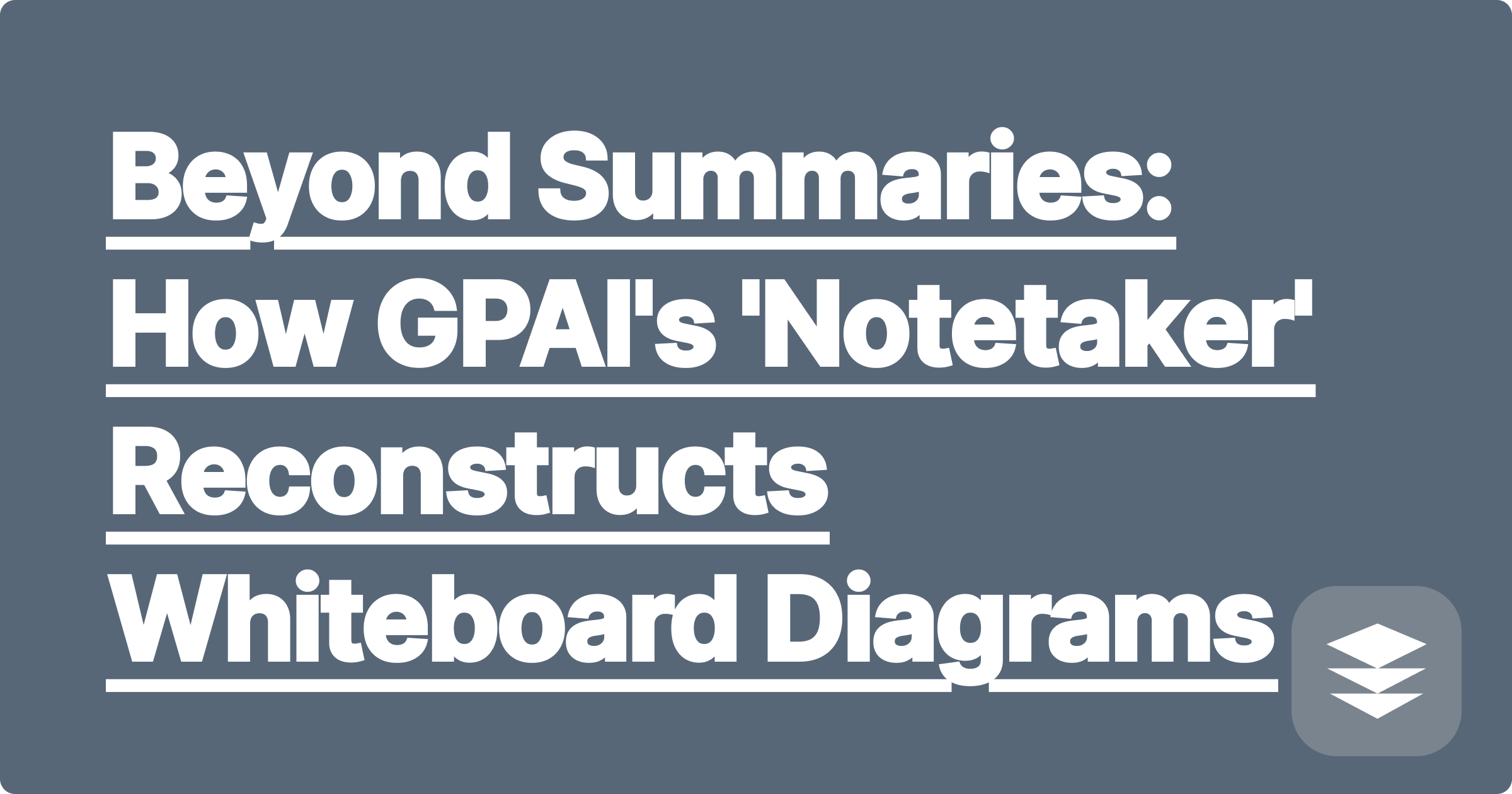
You're in a complex physics or engineering lecture. The professor is at the whiteboard, frantically drawing a free-body diagram, a circuit schematic, or a multi-step reaction mechanism. You snap a quick photo with your phone, knowing it's the only way to capture the information.
Later, you look at the photo. It's blurry, taken at an angle, and covered in your professor's chaotic handwriting. It’s a snapshot of a moment, but it’s not a useful study tool. You can't copy-paste a diagram from a JPG. How do you turn this visual chaos into clean, usable, digital notes?
This is where standard note-taking apps fail. You need more than just image storage; you need diagram reconstruction AI. A powerful AI whiteboard capture tool like GPAI Notetaker doesn't just save your photo—it analyzes it, understands the shapes and text, and rebuilds it as a clear, editable digital diagram.
Relying on a camera roll full of whiteboard pictures is an organizational nightmare.
You need to extract the knowledge from the image, not just store the pixels.
This is where an advanced AI tool changes the game. GPAI Notetaker uses a combination of OCR (Optical Character Recognition) and shape recognition to perform intelligent reconstruction.
FeatureStandard Photo Storage (e.g., Camera Roll)GPAI Notetaker (Diagram Reconstruction AI)OutputA static, often blurry image file (JPG).A clean, editable, vector-based diagram with digital text.Editability❌ None. You can't change anything.✅ Full. Change text, move elements, and correct mistakes.Searchability❌ Not possible.✅ Full. All text within the diagram is indexed and searchable.IntegrationIsolated from other notes.Seamless. The reconstructed diagram becomes a "Knowledge Block" in your cheatsheet.
Let's walk through the process of turning a chaotic photo into a perfect digital note.
Take the best photo you can, but don't stress about perfection. Try to get the entire board in the frame and minimize glare. Even a slightly angled or imperfect photo can work.
[Image: A student's smartphone capturing a photo of a large whiteboard filled with handwritten physics equations and diagrams. Alt-text: A user performing an AI whiteboard capture of their professor's lecture notes.]
Upload the image file directly. The AI will immediately begin its analysis.
This is the core of the technology. The AI performs several tasks at once:
The result is a clean, digitally-native version of the original whiteboard content.
The reconstructed diagram is now a fully interactive element. You can:
"My dynamics professor's whiteboard notes were impossible to read. I started using GPAI Notetaker's diagram reconstruction. It turned my blurry photos into perfect, clean diagrams that I could actually study from. It's the best tool I have for visual subjects."
Q1: How well does the diagram reconstruction ai handle very complex or messy diagrams?
A: While it works best with clear structures, the AI is designed to handle a significant amount of "noise." It's surprisingly effective at separating overlapping text and lines. The key benefit is that even if the reconstruction is 90% perfect, the output is fully editable, allowing you to quickly make the final 10% of corrections yourself.
Q2: Can it recognize different types of diagrams, like flowcharts, circuit diagrams, and chemical reactions?
A: Yes. A sophisticated ai whiteboard capture tool is trained to recognize the common conventions of different diagram types. It knows that arrows in a flowchart represent sequence, while arrows in a chemical reaction represent electron movement.
Q3: Is this better than just redrawing the diagram myself in a tool like PowerPoint or Miro?
A: It is exponentially faster. Manually redrawing a complex diagram can take 30-60 minutes. The AI reconstruction process takes less than one minute. It handles the tedious 90% of the work, leaving you with the simple task of verification and refinement.
Your whiteboard photos are a valuable but inaccessible part of your study materials. Stop letting them sit uselessly in your camera roll. With a powerful AI notetaker, you can reconstruct them into clean, digital, and fully integrated components of your study guide, ensuring you never lose a single piece of critical information.
Ready to bring your whiteboard notes back to life?
[Try GPAI Notetaker today. Upload a photo of a diagram and watch it become a clean, editable study tool. Sign up now for 100 free credits.]
How to Ace Your Next Multiple Choice Exam with an AI Question Generator
GPA Booster: How Top Students Use AI to Study Smarter,
Overcoming Math Anxiety: A Guide to Using AI as Your Friendly Tutor
The 'Humanizer' Feature: How GPAI Makes AI Solutions Undetectable
Beyond Summaries: How GPAI's 'Notetaker' Reconstructs Whiteboard Diagrams
From Multiple Files to One Master Cheatsheet: A Guide to the AI Builder
Is GPAI's 'Handwriting' Better Than a Font? A Realism Test
Unlocking Your 'Recent' Panel: How to Manage Your AI-Powered Study History
How to Solve Differential Equations with an AI Step-by-Step Solver
Mastering Stoichiometry: An AI Tool for Your General Chemistry Homework